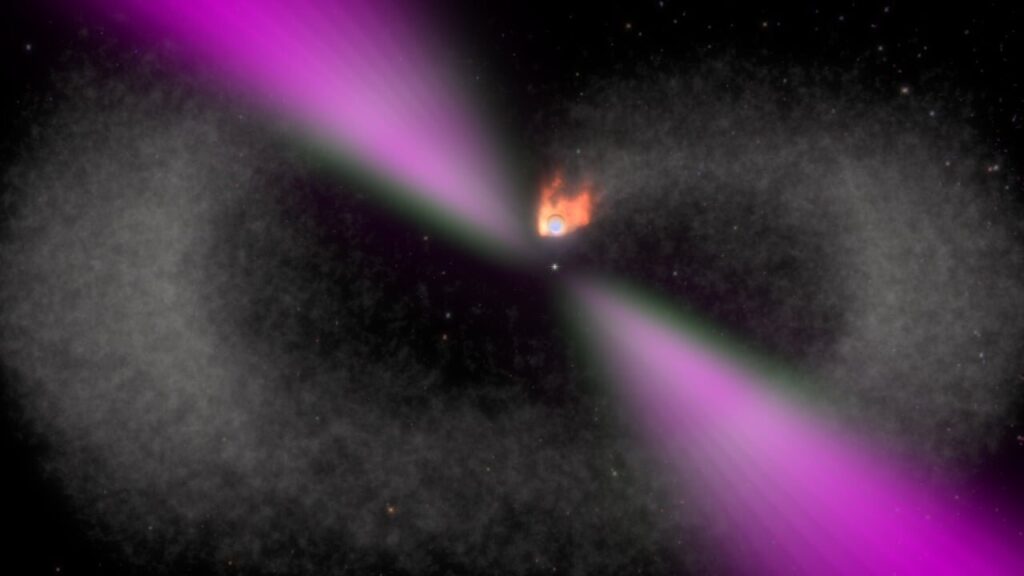
In a groundbreaking discovery, the James Webb Space Telescope (JWST) has identified an exoplanet orbiting a pulsar with an atmosphere composed almost entirely of carbon. This finding, detailed in a recent paper on the arXiv preprint server, challenges current astronomical theories and could pave the way for a new understanding of planetary formation.
The exoplanet, known as PSR J2322-2650b, orbits a millisecond pulsar in a system classified as a “black widow.” These systems are characterized by a neutron star that strips material from a companion star, often leaving behind a Jupiter-sized planet. However, the atmospheric composition of PSR J2322-2650b defies expectations, consisting mainly of elemental carbon in the forms of tricarbon (C3) and dicarbon (C2).
The Unusual Composition of PSR J2322-2650b
Typically, “black widow” systems result in planets with atmospheres rich in helium, as the neutron star’s radiation strips away lighter elements. Yet, the spectrographic analysis from JWST reveals a carbon-dominant atmosphere, a phenomenon previously unseen in such systems. This discovery raises questions about the processes that could lead to such an unusual atmospheric composition.
On the dayside of PSR J2322-2650b, temperatures soar above 2000 ℃, with distinct chemical signatures. Conversely, the night side, perpetually facing away from the pulsar, shows almost no features, suggesting a surface covered in soot-like material. The stark contrast between the two hemispheres adds another layer of complexity to this enigmatic planet.
Challenging Established Theories
The presence of a carbon-rich atmosphere contradicts existing models of planetary formation in “black widow” systems. Theoretical frameworks suggest that the outer layers of such planets should be either siphoned off by the pulsar or burned away. The persistence of a carbon atmosphere remains a mystery, with potential explanations like white-dwarf mergers falling short.
Researchers have calculated the carbon-to-oxygen (C/O) and carbon-to-nitrogen (C/N) ratios for PSR J2322-2650b, finding them to be extraordinarily high. The C/O ratio exceeds 100, while the C/N ratio surpasses 10,000. For context, Earth’s C/O ratio is 0.01, and its C/N ratio is 40, highlighting the abundance of carbon on this exoplanet.
“The fact that such a rich carbon atmosphere still exists remains a mystery,” the researchers noted, emphasizing the need for new theoretical models.
Implications for Planetary Science
Despite its atmospheric anomalies, PSR J2322-2650b aligns with some theoretical predictions. Circulation models for rapidly rotating planets suggest the presence of strong westerly winds, a phenomenon confirmed by JWST observations. The hottest part of the planet is located about 12 degrees west of center, providing the first observational evidence of such wind patterns.
The discovery of PSR J2322-2650b’s unique atmosphere underscores the importance of revisiting and potentially revising existing astronomical theories. As scientists work to reconcile these findings with established models, the JWST continues to scan the cosmos for further anomalies that could inspire the next scientific revolution.
This development follows a series of recent breakthroughs in exoplanet research, highlighting the JWST’s role as a pivotal tool in expanding our understanding of the universe. As researchers delve deeper into the mysteries of PSR J2322-2650b, the astronomical community anticipates more revelations that could reshape our knowledge of planetary systems.





